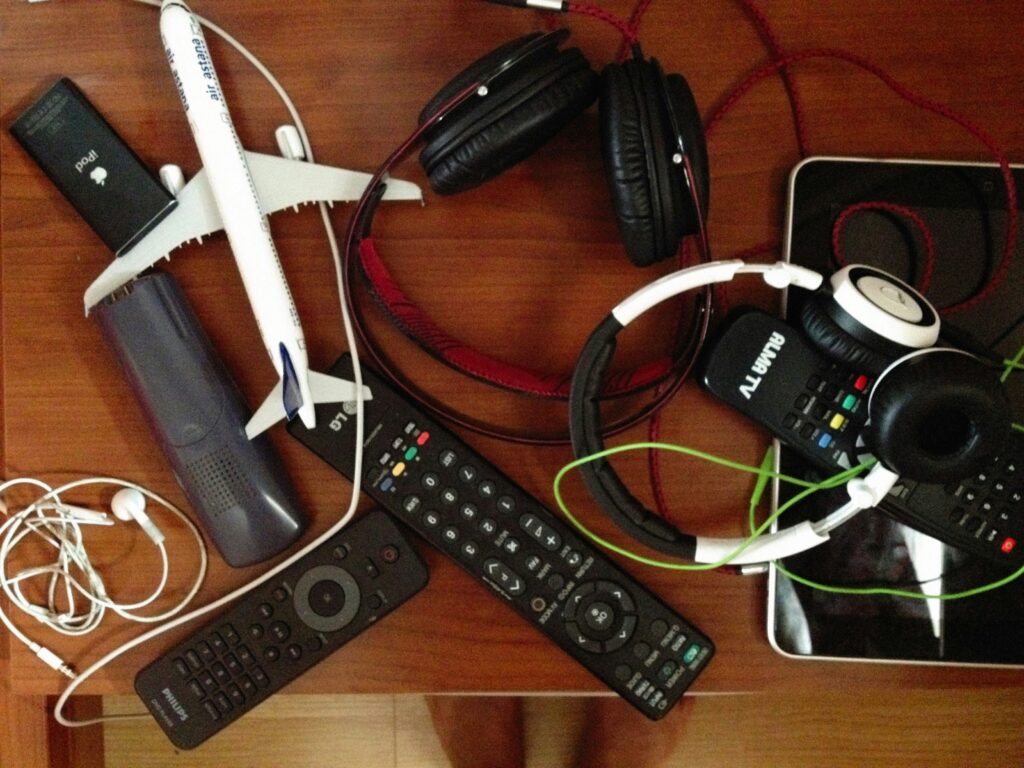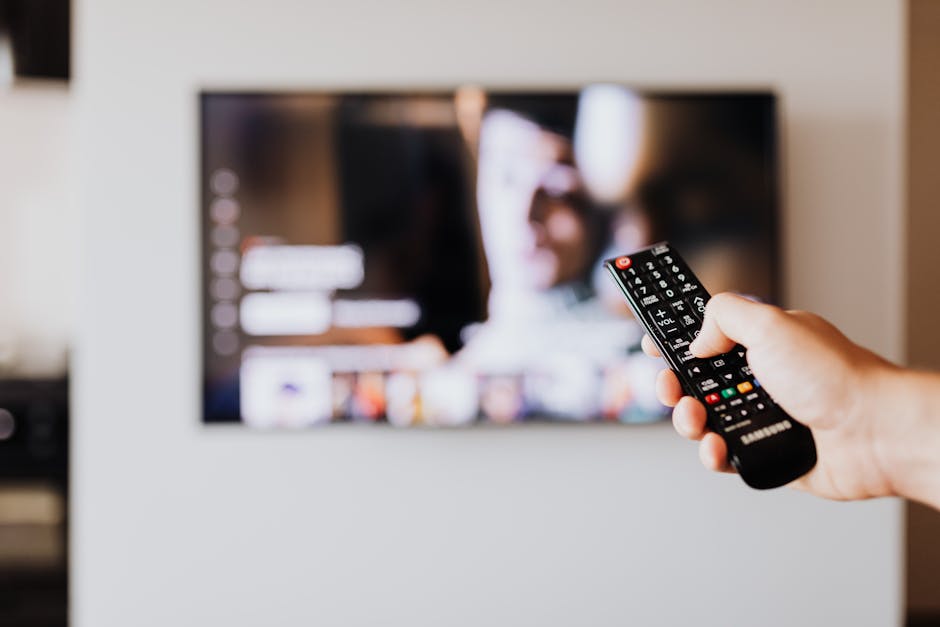Introduction: A Changing Media Landscape
Ten years ago, the average evening looked a lot like this: dinner, couch, remote in hand, and maybe a cable lineup good enough to flip through. But that rhythm is long gone. Viewer habits have shifted hard and fast, with on-demand expectations now baked into how we consume content. People want to watch what they want, when they want, without waiting for someone else’s schedule. Enter streaming—a force that didn’t just disrupt cable, it rewired how we think about entertainment access.
Cord-cutting isn’t a niche trend anymore—it’s the default. Platforms like Netflix, Hulu, and Disney+ made it simple to ditch cable contracts and still get a steady stream of movies, shows, and originals. Add in mobile viewing, personalization algorithms, and the freedom to consume content without ads (if you pay up), and it’s no surprise traditional television is scrambling to stay relevant.
But this isn’t just about cheaper bills or better UI. The tug-of-war between streaming and cable matters because it shapes how stories are told, who gets paid, and what kinds of content rise to the top. Consumers now hold the remote to the entire ecosystem, and creators—from YouTubers to filmmakers—are adjusting to meet those new demands. Whether you’re watching or making content, the rules have changed.
Round 1: Cost Comparison
Let’s talk money—because whether you’re sticking with cable or diving into streaming, the numbers add up fast.
Traditional cable packages still carry an average monthly bill of around $70 to $120, depending on location and channel bundles. That doesn’t include equipment rental fees (think $10–$15/month for a set-top box) or added charges for premium movie channels and sports access—those can tack on another $20 or more. So while cable may seem like an all-in-one solution, the real cost often creeps well above $150/month.
Streaming looks cheaper on paper, and it can be—if you pick just one service. Netflix, Disney+, Hulu, Max, and others fall anywhere from $7 to $20 per month each. But most households subscribe to three or more platforms to get a range of content, putting the monthly tab around $40–$60. That’s before you factor in internet costs and potential overage fees if you don’t have unlimited data.
Then there are the hidden costs. Cable companies love those one-year teaser rates that balloon in year two. On the flip side, streaming platforms tempt with free trials and then quietly raise prices every year. Sports fans also don’t get off easy—streaming ESPN, NFL Sunday Ticket, or regional games can cost as much (or more) than a cable bundle dedicated to sports.
Bundling is the battleground now. Streaming services are imitating cable’s tactic—Disney+, Hulu, and ESPN+ tie together their offerings to lure users, while platforms like Amazon integrate third-party streaming channels. Cable providers, meanwhile, are throwing in streaming apps as value-adds to stop the bleeding.
Bottom line? Neither side is as cheap as it looks. But if you’re selective—and realistic—you can still get plenty of content without draining your wallet.
Round 2: Content Availability and Variety
Streaming services have leaned hard into original programming—and it’s paying off. Netflix, HBO Max, Apple TV+, and a growing list of others are betting big on exclusive shows and films that define their brand. Series like Stranger Things, Succession, and Ted Lasso aren’t just entertainment—they’re cultural events. And they’re only available behind a subscription paywall. That’s a major pull for viewers who are more interested in bingeable prestige content than flipping through 200 cable channels.
Still, cable’s not dead. Not even close. What it lacks in flexibility, it makes up for in real-time access. Live sports, breaking news, awards shows—these remain cable’s stronghold. For all the innovation streaming brings, it hasn’t quite nailed the immediacy and shared experience of watching a game or major event unfold in real time. In that sense, cable still captures something streaming hasn’t cracked.
Then there are the exclusivity deals. Sports leagues signing with certain networks, streamers locking down movie franchises—it all forces the viewer to make hard choices. Want to watch the Olympics, the NBA Finals, and that buzzy new drama? You’ll probably need a patchwork of subscriptions—or a cable plan that still offers one-stop access.
In the end, content is king. And the battle isn’t just over quantity anymore. It’s about control, access, and time. And every platform is fighting to win those hours from your day.
Round 3: User Experience and Flexibility
This is where streaming really shows its teeth. On-demand access has flipped the script—viewers expect to watch what they want, when they want, start to finish. Binge-watching isn’t just a habit now, it’s the norm. That’s a sharp contrast from cable’s DVR systems, which feel dated unless you’re watching live TV, and let’s be honest, most people aren’t waiting for a 9 p.m. slot anymore.
Streaming gives you libraries instead of schedules. Entire seasons drop at once, old favorites are just a search away, and you’re never stuck flipping through channels. Then there’s device freedom—smart TVs, phones, tablets, heck, even gaming consoles. Everyone in the house can watch from their own profile with personalized queues, parental controls, and even subtitle preferences.
Meanwhile, algorithms quietly power the experience behind the scenes. Platforms learn your habits—what you skip, what you finish, even when you tend to watch—and tweak recommendations accordingly. That kind of personalization is hard to beat. Cable’s still got the basics, but streaming delivers the frictionless, customized experience people now expect.
Bottom line: convenience, control, and discovery rule the arena. If cable wants to stay in the fight, it’s got a UX mountain to climb.
Round 4: Audience Demographics and Behavior
Cable TV isn’t dead—it just has a specific audience now. Older generations, particularly those 55 and up, still gravitate toward traditional cable. Habit plays a role, but so does simplicity: live news, sports, and fixed-channel schedules offer a plug-and-watch experience. For viewers who don’t care much for on-demand flexibility, cable still delivers.
But younger audiences have moved on. Millennials and Gen Z aren’t just cutting the cord—they’re reshaping the screen. Streaming platforms dominate because they’re mobile-friendly, flexible, and algorithmically tailored. Watching on a phone during lunch, queuing up episodes on a laptop during commutes—this is how viewing happens now. For these groups, convenience is the expectation, not the bonus.
User-generated content is cranking that shift into high gear. TikTok, YouTube, and Twitch creators aren’t just filling the gaps—they’re building new standards. Bite-sized storytelling, authentic voices, and interactive chats are redefining what “entertainment” looks like. The result? Audiences expect speed, relatability, and control. Traditional programming can’t always keep up.
For more on how user-created media is altering the content equation, check out The Growth of User-Generated Content in Online Media.
Round 5: Monetization Models
The way we pay to watch content has split into two camps: SVOD (Subscription Video on Demand) and AVOD (Ad-Supported Video on Demand). On one hand, you’ve got platforms like Netflix, Disney+, and Max charging monthly fees to skip the ads. On the other, services like Pluto TV, Tubi, and even YouTube increasingly let you watch for free—if you’re okay sitting through ads. For consumers, it creates choice. For creators, it creates trade-offs.
Cable, meanwhile, is sticking to its old game: charge high monthly fees, then stack in ads and bundling charges for good measure. That means you might pay for a hundred channels and only watch six—plus you’re still watching commercials. It’s a business model that’s wearing thin with modern viewers.
Enter the hybrids. Platforms like Hulu and Peacock are blending subscription and ad-based models to meet people in the middle. Want to pay less? You get ads. Want an ad-free experience? Pay more. And now, some vlog-style creators are following suit—offering mix-and-match access through Patreon or direct-to-fan platforms.
One thing’s clear: there’s no one-size-fits-all model anymore. In 2024, monetization is flexible—and audiences appreciate having options that match how (and how much) they want to pay.
Final Verdict: Who’s Winning—and What’s Next
In 2024, streaming is no longer the scrappy underdog—it’s the default. According to Nielsen, over 75% of U.S. households now prioritize streaming subscriptions over traditional cable, with younger demographics tipping the scales. Cable? It’s still hanging on, but mostly among older audiences and in markets where live sports or bundled deals keep it relevant. Even then, the erosion is steady.
The bigger story is what’s replacing cable, not just what’s killing it. Streaming platforms are evolving—fast. Hybrid models that mix subscription access with targeted ads are on the rise, offering tiers for every wallet size. Services like FAST (free ad-supported streaming TV) are gaining attention, pulling in millions who don’t want another monthly bill. At the same time, major streamers are rolling out live event features and licensed sports coverage to chip away at one of cable’s last true moats.
Will cable survive? For now. But survival isn’t dominance. Its future likely lies in niche markets, regional bundling, and becoming a utility like landline phones once were—still there, rarely used.
The real power shift is with consumers. Viewers want control: over what they watch, when, how, and how much they pay. Streaming answers all of that with flexibility. The result is a fractured but empowered media landscape where personalization beats programming schedules, and convenience trumps tradition.
The battle lines may blur over time, but the scoreboard’s pretty clear. The viewer isn’t just choosing the winner—they are the winner.
Conclusion: Adapting in a Viewer-First Era
As the tug-of-war between streaming services and cable continues, viewers hold more power than ever. Choosing the right platform isn’t a one-size-fits-all decision—it depends on your entertainment needs, lifestyle, and budget.
Choosing What Fits Your Life and Wallet
Before diving headfirst into a subscription or sticking with traditional TV, consider these factors:
- Viewing habits: Do you binge-watch series or tune in for live sports and news?
- Budget limits: Would a few low-cost subscriptions work better than a bundled cable setup?
- Tech comfort: Are you comfortable navigating apps, devices, and internet outages?
- Multiple users: Will a family or household be sharing the platform?
Ultimately, aligning your platform with your actual viewing habits helps avoid overspending or underutilizing services.
The Real Differentiators: Content, Access & Control
While price matters, three key elements increasingly sway the decision:
- Content quality: High-end original series, critically acclaimed films, and niche genres may tip the scale toward specific services.
- Access and portability: Streaming offers access on laptops, tablets, and phones—wherever and whenever you want.
- Control: Unlike cable, streaming lets users skip ads (on some tiers), pause, rewind, and customize their content experience.
Consumers are no longer passive watchers; they are active participants in how, where, and what they watch.
Final Word: The Viewer is in Control
The media landscape is still evolving. Cable isn’t gone, but streaming is rewriting the rules. Instead of declaring one winner, it’s clear that:
- Viewers now drive content consumption
- Flexibility and personalization are changing expectations
- The future will likely involve a blend of both worlds
Bottom line: The battle isn’t over, but the viewer is firmly in charge. The platforms that listen and adapt will be the ones that thrive.




